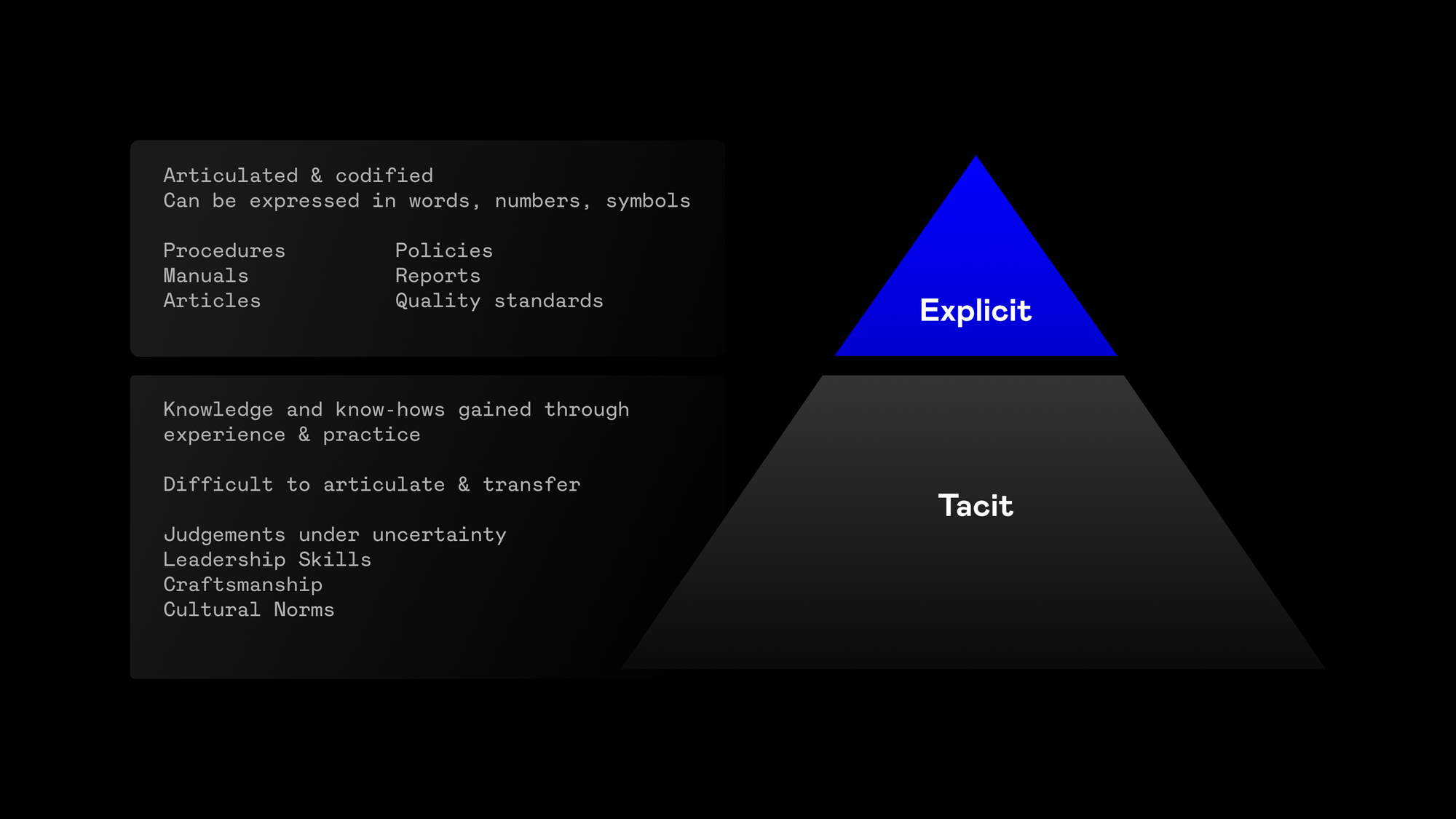
The Tacit and Explicit Knowledge Framework helps us understand the types of knowledge and their interplay in different contexts.
Explicit Knowledge
Easily articulated, documented, and transferred. It is codified knowledge found in books, manuals, databases, and other tangible forms.
Characteristics
- Can be expressed in formal language
- Can be expressed in words, number, symbols
- Structured & organized
Examples
- Procedures
- Manuals
- Policies
- Articles
- Reports
Tacit Knowledge
Tacit knowledge is personal, context-specific, often difficult to formalize & communicate. It is acquired through personal experience, practice, and direct observation. Tacit knowledge refers to insights & intuitions that are hard to express explicitly.
Characteristics
- Rooted in individual experiences
- Context-specific → relevant to particular situations or environments.
- Hard to formalize / codify / articulate
- Participatory → gained through direct involvement
Examples
- Good judgements under uncertainty
- Leadership skills
- Craftsmanship
- Cultural codes
Interplay between the two
Complementary nature
Tacit and explicit knowledge are not mutually exclusive but complement each other. Effective KM/PKM practices involve leveraging both types.
Conversion processes
People and companies constantly try to convert tacit into explicit knowledge to facilitate sharing & preservation.
Knowledge creation
New knowledge often emerges from the interaction between the two.